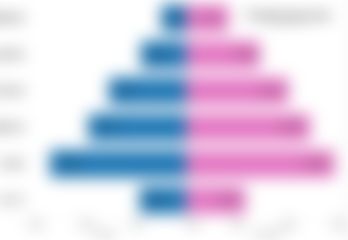Facebook (stylized as facebook) is an American online social media and social networking service based in Menlo Park, California, and a flagship service of the namesake company Facebook, Inc. It was founded by Mark Zuckerberg, along with fellow Harvard College students and roommates Eduardo Saverin, Andrew McCollum, Dustin Moskovitz and Chris Hughes.

Zuckerberg built a website called "Facemash" in 2003 while attending Harvard University. The site was comparable to Hot or Not and used "photos compiled from the online face books of nine Houses, placing two next to each other at a time and asking users to choose the "hotter" person".[17] Facemash attracted 450 visitors and 22,000 photo-views in its first four hours.[18] The site was sent to several campus group listservs, but was shut down a few days later by Harvard administration. Zuckerberg faced expulsion and was charged with breaching security, violating copyrights and violating individual privacy. Ultimately, the charges were dropped.[17] Zuckerberg expanded on this project that semester by creating a social study tool ahead of an art history final exam. He uploaded all art images to a website, each of which was accompanied by a comments section, then shared the site with his classmates.[19]
A "face book" is a student directory featuring photos and personal information.[18] In 2003, Harvard had only a paper version[20] along with private online directories.[17][21] Zuckerberg told The Harvard Crimson, "Everyone's been talking a lot about a universal face book within Harvard. ... I think it's kind of silly that it would take the University a couple of years to get around to it. I can do it better than they can, and I can do it in a week."[21] In January 2004, Zuckerberg coded a new website, known as "TheFacebook", inspired by a Crimson editorial about Facemash, stating, "It is clear that the technology needed to create a centralized Website is readily available ... the benefits are many." Zuckerberg met with Harvard student Eduardo Saverin, and each of them agreed to invest $1,000 in the site.[22] On February 4, 2004, Zuckerberg launched "TheFacebook", originally located at thefacebook.com.[23]
2006–2012: Public access, Microsoft alliance, and rapid growth
In May 2006, Facebook hired its first intern, Julie Zhuo.[39] After a month, Zhuo was hired as a full-time engineer.[39] On September 26, 2006, Facebook opened to everyone at least 13 years old with a valid email address.[40][41][42] By late 2007, Facebook had 100,000 pages on which companies promoted themselves.[43] Organization pages began rolling out in May 2009.[44] On October 24, 2007, Microsoft announced that it had purchased a 1.6% share of Facebook for $240 million, giving Facebook a total implied value of around $15 billion. Microsoft's purchase included rights to place international advertisements.[45][46]
In May 2007, at the first f8 developers conference, Facebook announced the launch of the Facebook Developer Platform, providing a framework for software developers to create applications that interact with core Facebook features. By the second annual f8 developers conference on July 23, 2008, the number of applications on the platform had grown to 33,000, and the number of registered developers had exceeded 400,000.[47]
In October 2008, Facebook announced that its international headquarters would locate in Dublin, Ireland.[48] In September 2009, Facebook said that it had achieved positive cash flow for the first time.[49] A January 2009 Compete.com study ranked Facebook the most used social networking service by worldwide monthly active users.[50]
The company announced 500 million users in July 2010.[51] Half of the site's membership used Facebook daily, for an average of 34 minutes, while 150 million users accessed the site from mobile devices. A company representative called the milestone a "quiet revolution."[52] In November 2010, based on SecondMarket Inc. (an exchange for privately held companies' shares), Facebook's value was $41 billion. The company had slightly surpassed eBay to become the third largest American web company after Google and Amazon.com.[53][54]
On November 15, 2010, Facebook announced it had acquired the domain name fb.com from the American Farm Bureau Federation for an undisclosed amount. On January 11, 2011, the Farm Bureau disclosed $8.5 million in "domain sales income", making the acquisition of FB.com one of the ten highest domain sales in history.[55]
In February 2011, Facebook announced plans to move its headquarters to the former Sun Microsystems campus in Menlo Park, California.[56][57] In March 2011, it was reported that Facebook was removing about 20,000 profiles daily for violations such as spam, graphic content and underage use, as part of its efforts to boost cyber security.[58] Statistics showed that Facebook reached one trillion page views in the month of June 2011, making it the most visited website tracked by DoubleClick.[59][60] According to a Nielsen study, Facebook had in 2011 become the second-most accessed website in the U.S. behind Google.[61][62]
Technical aspects
This section's factual accuracy may be compromised due to out-of-date information. The reason given is: Facebook no longer uses HipHop for PHP.
The website's primary color is blue as Zuckerberg is red–green colorblind, a realization that occurred after a test undertaken around 2007.[156][157] Facebook is built in PHP, compiled with HipHop for PHP, a "source code transformer" built by Facebook engineers that turns PHP into C++.[158] The deployment of HipHop reportedly reduced average CPU consumption on Facebook servers by 50%.[159]
2012 architecture
Facebook is developed as one monolithic application. According to an interview in 2012 with Facebook build engineer Chuck Rossi, Facebook compiles into a 1.5 GB binary blob which is then distributed to the servers using a custom BitTorrent-based release system. Rossi stated that it takes about 15 minutes to build and 15 minutes to release to the servers. The build and release process has zero downtime. Changes to Facebook are rolled out daily.[159]
Facebook used a combination platform based on HBase to store data across distributed machines. Using a tailing architecture, events are stored in log files, and the logs are tailed. The system rolls these events up and writes them to storage. The user interface then pulls the data out and displays it to users. Facebook handles requests as AJAX behavior. These requests are written to a log file using Scribe (developed by Facebook).[160]
Data is read from these log files using Ptail, an internally built tool to aggregate data from multiple Scribe stores. It tails the log files and pulls data out. Ptail data are separated into three streams and sent to clusters in different data centers (Plugin impression, News feed impressions, Actions (plugin + news feed)). Puma is used to manage periods of high data flow (Input/Output or IO). Data is processed in batches to lessen the number of times needed to read and write under high demand periods (A hot article generates many impressions and news feed impressions that cause huge data skews). Batches are taken every 1.5 seconds, limited by memory used when creating a hash table.[160]
Data is then output in PHP format. The backend is written in Java. Thrift is used as the messaging format so PHP programs can query Java services. Caching solutions display pages more quickly. The data is then sent to MapReduce servers where it is queried via Hive. This serves as a backup as the data can be recovered from Hive.[160]
User growth and decline
Facebook's rapid growth began as soon as it became available and continued through 2018, before beginning to decline.
Facebook passed 100 million registered users in 2008,[241] and 500 million in July 2010.[51] According to the company's data at the July 2010 announcement, half of the site's membership used Facebook daily, for an average of 34 minutes, while 150 million users accessed the site by mobile.[52]
In October 2012 Facebook's monthly active users passed one billion,[78][242] with 600 million mobile users, 219 billion photo uploads, and 140 billion friend connections.[79] The 2 billion user mark was crossed in June 2017.[243][244]
In November 2015, after skepticism about the accuracy of its "monthly active users" measurement, Facebook changed its definition to a logged-in member who visits the Facebook site through the web browser or mobile app, or uses the Facebook Messenger app, in the 30 day period prior to the measurement. This excluded the use of third-party services with Facebook integration, which was previously counted.[245]
From 2017 to 2019, the percentage of the U.S. population over the age of 12 who use Facebook has declined, from 67% to 61% (a decline of some 15 million U.S. users), with a higher drop-off among younger Americans (a decrease in the percentage of U.S. 12- to 34-year-olds who are users from 58% in 2015 to 29% in 2019.[246][247] The decline coincided with an increase in the popularity of Instagram, which is also owned by Facebook Inc.[246][247]
Historically, commentators have offered predictions of Facebook's decline or end, based on causes such as a declining user base;[248] the legal difficulties of being a closed platform, inability to generate revenue, inability to offer user privacy, inability to adapt to mobile platforms, or Facebook ending itself to present a next generation replacement;[249] or Facebook's role in Russian interference in the 2016 United States





Data is then output in PHP format. The backend is written in Java. Thrift is used as the messaging format so PHP programs can query Java services. Caching solutions display pages more quickly. The data is then sent.good luck